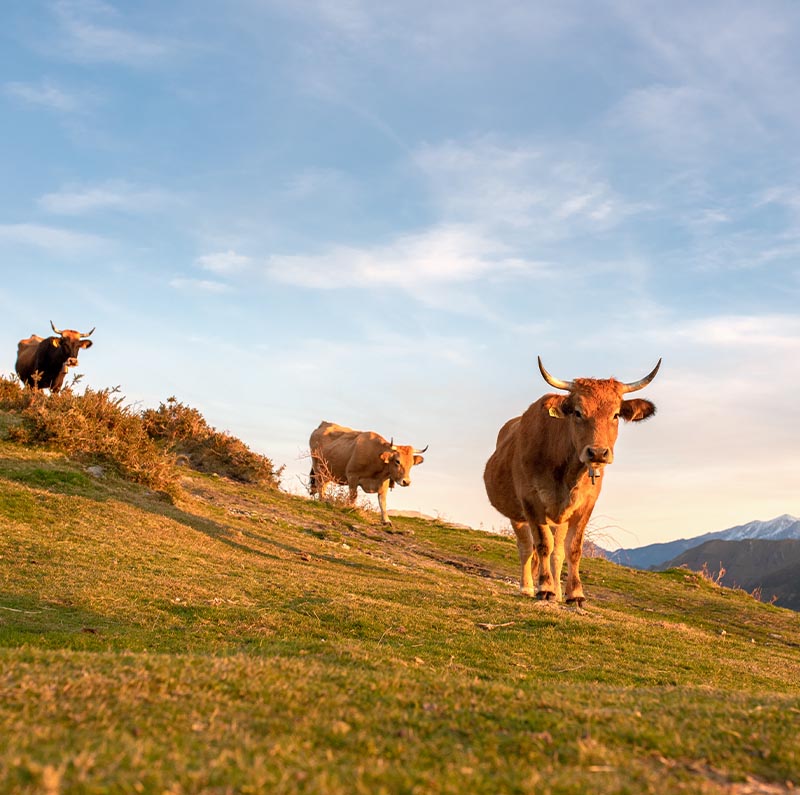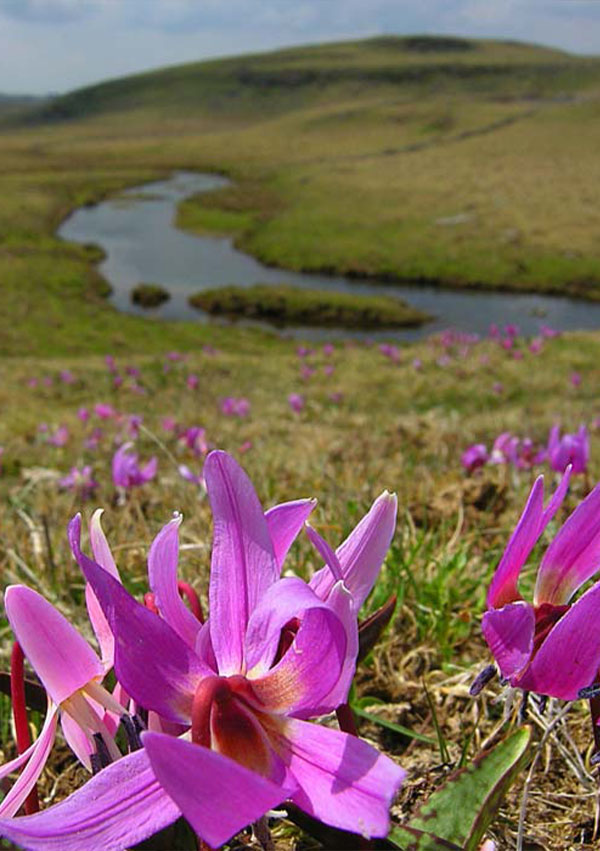Présentation
Aubrac
The Aubrac region straddles the departments of Lozère, Cantal and Aveyron. Aubrac owes its name to the ancient dômerie d’Aubrac at 1350 m altitude. Aubrac takes its name from “Alto Braco”, meaning “high place”.
Long isolated and served by narrow, winding roads, Aubrac has preserved its nature, architecture and culture. The most folkloric of Aubrac traditions is the transhumance.
The history of Aubrac
Until around the year 1000, Aubrac was covered in beech and fir forests. These woods sheltered brigands, who found peace and quiet and plenty of places to hide. They would rob pilgrims coming from Le Puy-en-Velay, who used the ancient Roman road called via Agrippa to get to the shrine of Santiago de Compostela in Spain. (…)
A few remains of the former monastery remain: the Romanesque church, a 15th-century building converted into a forest house, and a square tower known as the “Tour aux Anglais” (English Tower), said to have been built around 1350 to protect the dômerie from English attacks.
The monks gradually cleared the land around their abbey. These cleared areas were too high in altitude to grow cereals profitably. On the other hand, the grass grew well and was very rich. That’s how the Aubrac breed came into being: a hardy, hardy breed (…)
Laguiole and Aligot…
Laguiole is a cheese made from whole, raw cow’s milk. It is made in the “Mazucs” (burons) scattered across the Aubrac pastures. Today, the only active buron is the Treille aux Salces on the d52 between Nasbinals and Saint-Germain Du Teil.
As for Aligot, when pilgrims on their way to Santiago de Compostela arrived exhausted and hungry, they would knock on the door of the dômerie and ask for “Aliquid” in Latin, meaning “something to eat”. Over the years, this term became aliquot, then in Occitan aligot.
La Maison Bastide
where social mix and human warmth mingle around tasty local cuisine
Traditions in Aubrac
The most folkloric of Aubrac traditions is transhumance. In days gone by, wild herds, guided by their instinct, followed the trail of the most abundant grasslands, transhuming towards the high pastures of the Massif Central. Over the millennia, they left their mark between thickets and bushes, carving out a path known as a draille.
Later, the man who became a shepherd himself accompanied his animals. So it was that on May 25, Saint-Urbain’s Day, the local cowsheds were emptied, and the cows, polished and adorned with plumes, pompons, flowers, branches and ribbons, left for the summer pasture…
The summer pastures lasted until October 13, the day of Saint-Guiral. During this time, cows and calves were kept by buronniers in burons: initially a simple hut, it became more solid with a very low lauze roof.
This is where Laguiole d’Aubrac cheese was made, and matured in the buron cellar. And to quench your thirst: Aubrac tea, a drink made from calamitha grandiflora, or Aubrac gentian as an aperitif.
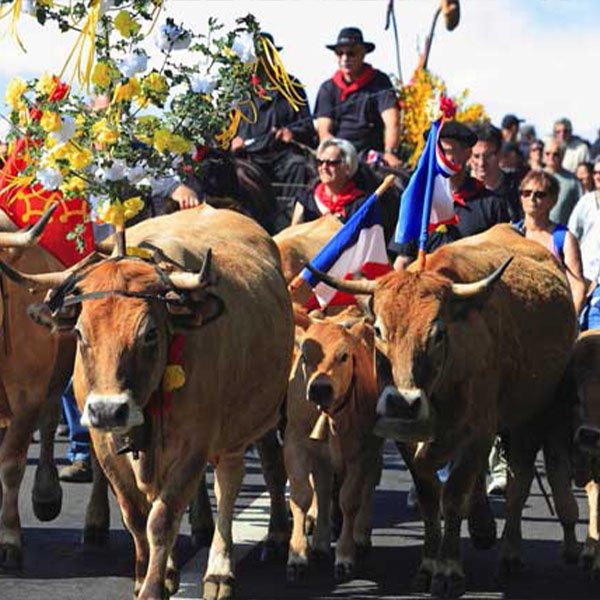
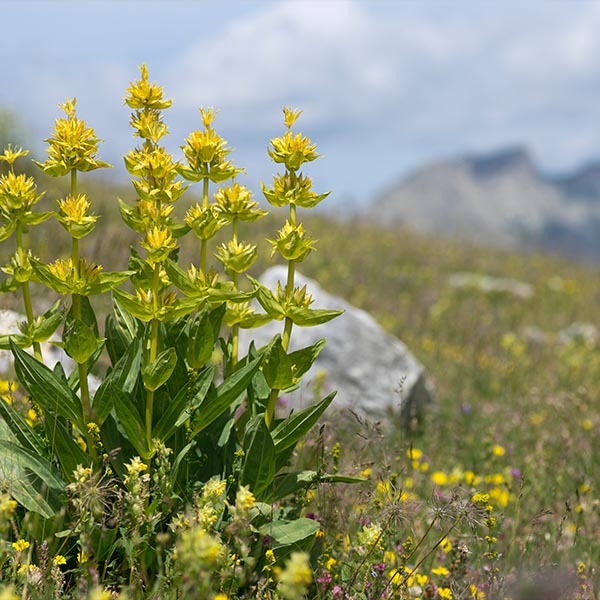
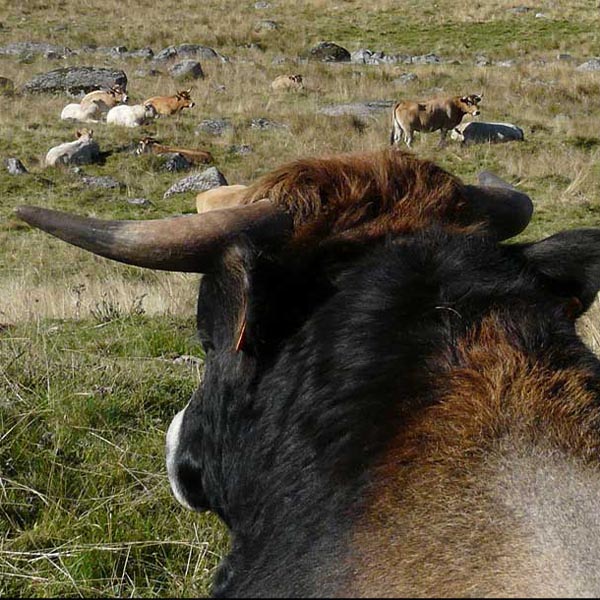
regional natural park
Aubrac’s heritage
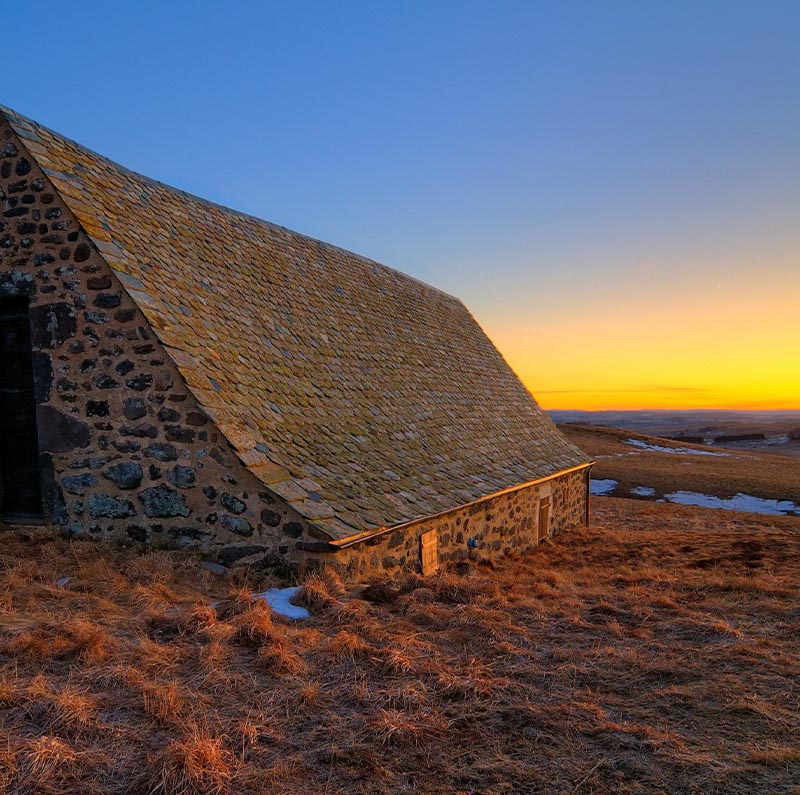
Because it was long isolated and served by narrow, winding roads, Aubrac has managed to preserve its nature, architecture and culture.
The Aubrac plateau is a rich and diverse reservoir for flora and fauna, but also boasts a remarkable architectural heritage, such as the beautiful 11th-century Romanesque church at Nasbinals, with its solid octagonal bell tower set at the intersection of the arms of the Latin cross.
On your way to Santiago de Compostela or on the Via Agrippa, or simply along the way, you’ll discover many bridges, bread ovens, fountains, crosses, ferradous, wash-houses and burons that make up the Aubrac’s small heritage.
AUBRAC cannot be told, it must be experienced.
phone
reservations
address
Village - 48260 NASBINALS
FRANCE

